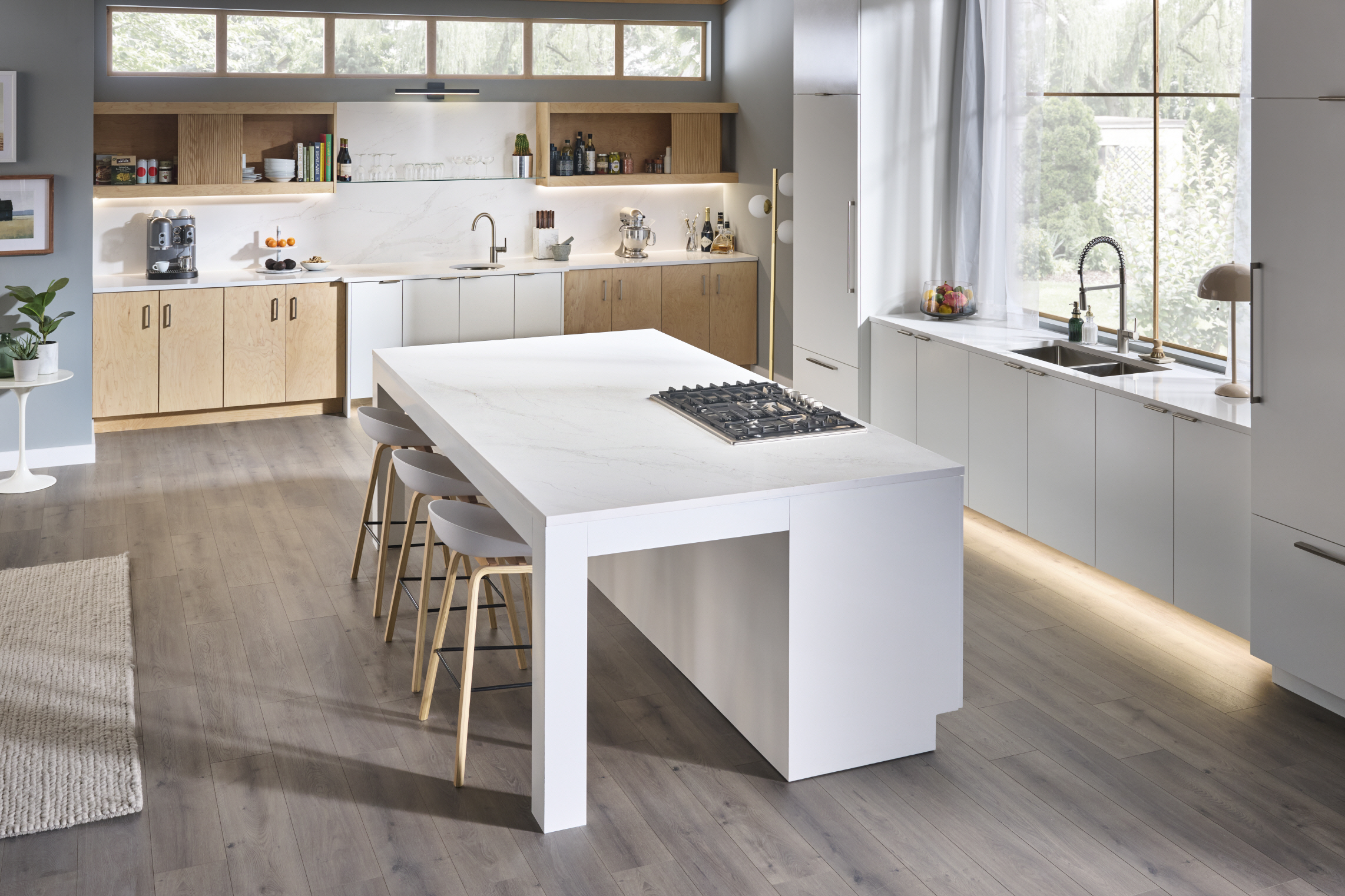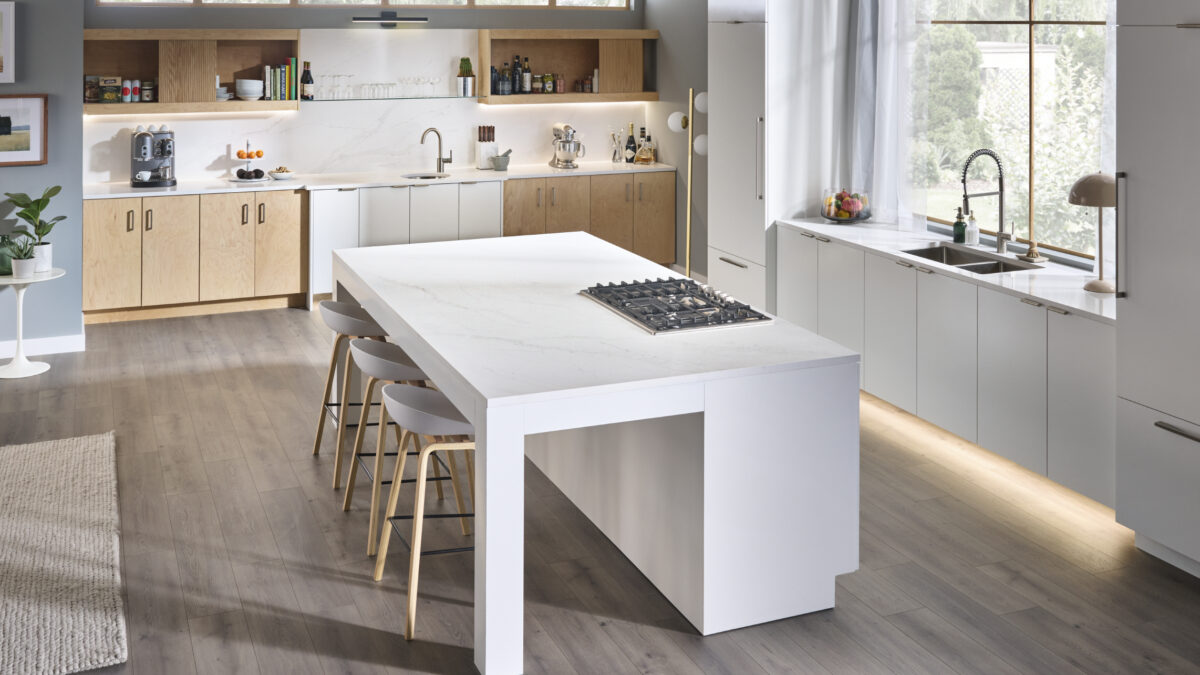
Calacatta gold quartz is a premium countertop material, often considered a significant investment for any home. Renowned for its exceptional strength, durability, and stain resistance, this material features a stunning design that can become the focal point of any room. In this article, we explore the cost of Calacatta gold quartz and examine its pros and cons to help you determine if it’s the ideal choice for your needs.
What is Calacatta gold quartz?
Calacatta gold quartz, an engineered surface, blends approximately 90% quartz stone with 10% added resins, polymers, and pigments, enhancing the quartz’s natural beauty with extra durability from synthetic materials.
Renowned for its luxurious charm, Calacatta gold quartz elevates any space it occupies. It showcases a delicate white base complemented by veins in beige, gray, or gold, offering a bold, clean, and luminous aesthetic. This versatility makes it ideally suited for a myriad of indoor applications, including kitchen countertops, shower surrounds, backsplashes, and bathroom vanities.
How much does Calacatta gold quartz cost?
The cost of Calacatta gold quartz ranges between $59 to $130 per square foot, with an average price of about $80 per square foot. It’s important to consider that the final price can vary based on factors such as the manufacturer, the dimensions, and the specific design of the slab. Additionally, installation costs and any custom features, including the edging and corner treatments of the countertops, should be included in the overall budget for your remodeling or building project.
In terms of pricing, Calacatta gold quartz is among the pricier countertop options on the market. It falls within a similar price bracket as granite, which averages $70 per square foot, and is comparable to other natural stones such as marble and soapstone, with an average cost of $85 per square foot. When compared to other engineered materials like laminate, which typically costs around $34 per square foot, quartz stands out as a significantly more expensive choice.
Pros and Cons of Calacatta gold quartz
As with any countertop material, Calacatta gold quartz comes with its set of advantages and disadvantages.
- Pros
Beauty: The aesthetic appeal of Calacatta gold quartz is one of its primary strengths. Its understated base hue renders it a versatile foundation for a multitude of design schemes, while the distinctive veining allows for the introduction of accent colors via paint, appliances, and finishes. Modern manufacturing techniques mean this material is available in a vast array of color and pattern options, catering to diverse design tastes.
Durability: Engineered for enhanced resilience, Calacatta gold quartz outperforms natural stone in strength and sturdiness. The incorporated resins and polymers endow it with superior resistance to chips, scratches, and breaks. This renders it an ideal surface for busy kitchens and bathrooms, places that demand a material capable of withstanding constant use.
Non-porous: Contrary to natural stones like granite and marble, Calacatta gold quartz is non-porous by nature. It repels water, moisture, and other liquids, preventing stains and discoloration. This resistance to liquid absorption, even from potent staining agents like red wine and coffee, makes it a sought-after choice for kitchen counters where spills are common. Its inability to absorb also means it does not promote the growth of mold, bacteria, or mildew, contributing to a more hygienic environment for food preparation.
- Cons
Price: A notable drawback of Calacatta gold quartz is its cost. You’ll find that the expense for this type of quartz countertop is higher compared to other manufactured materials. Yet, the investment can be worthwhile considering Calacatta gold quartz’s remarkable durability and resistance to staining, which translates to a longer lifespan in your home without the need for frequent replacements.
Sunlight Discoloration: Another potential issue is that prolonged exposure to direct sunlight can lead to discoloration of Calacatta gold quartz slabs. This might detract from the slab’s exquisite veining and pattern details. To mitigate this, it’s best to use quartz countertops for indoor settings and position them in areas not subject to constant sunlight.
Heat Damage: While it does offer some resistance to heat, Calacatta gold quartz is not as resilient to high temperatures as some natural stone options. It can withstand heat only up to about 150 degrees Fahrenheit; exposure to higher temperatures or for extended periods may cause damage. Protecting your Calacatta gold quartz countertops from direct contact with hot items will help maintain their aesthetic appeal.

